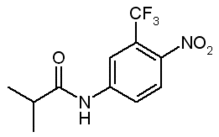Nondermatologists often manage acne vulgaris. Treatments depend on severity, which can be influenced by genetics, stress, and, possibly, diet. Haider and Shaw evaluated data from the past four decades to determine which treatments are most effective and how they can be administered with the fewest complications.
The authors studied 29 randomized, double-blind trials that documented reductions in lesions, and several systematic reviews. They note that methods of assessing acne severity are highly inconsistent, although conclusions still can be drawn. Treatments under consideration were topical retinoids, topical antimicrobials, oral antibiotics, hormonal therapy, and isotretinoin.
Topical retinoids include tretinoin, adapalene, and tazarotene. Tretinoin and adapalene reduce total lesions by more than 50 percent, with adapalene being less irritating to skin. One trial showed similar lesion reduction with tazarotene gel. Overall, retinoids reduce lesions by 40 to 70 percent.
Topical antibiotics include clindamycin, erythromycin, and tetracycline. Benzoyl peroxide and azelaic acid also have antimicrobial activity. Original studies show that clindamycin and erythromycin reduce lesions to a similar degree as retinoids. Products that combine antibiotics with benzoyl peroxide are more effective than either product alone. Antimicrobials also can be used in combination with retinoids, with combination products being more successful than a topical antibiotic alone. Because the onset of action is slow, patients must be treated for six to eight weeks with these agents to observe an effect. Topical antibiotics and benzoyl peroxide can cause skin irritation. While conventional antibiotics of ten create bacterial resistance, this has not been reported with benzoyl peroxide or azelaic acid.
Oral antibiotics used for the treatment of acne include tetracycline, doxycycline, minocycline, and erythromycin. Studies on oral antibiotics are few and in some instances are hampered by methodological flaws. However, these agents appear to work better than placebo. Gastrointestinal side effects and photosensitivity are associated with tetracycline and doxycycline; minocycline also causes adverse side effects, including vertigo. Perhaps of most concern is the problem of antibiotic resistance, which affects more than one half of bacterial strains in Europe. Combination therapy and avoidance of long-term therapy are recommended.
Hormonal treatments include oral contraceptives and androgen-receptor blockers. One trial showed a 50 percent reduction of lesions in patients treated with oral contraceptives, compared with 30 percent in those given placebo. In Europe, newer progesterone-estrogen combinations have been shown to be effective. Androgen-receptor blockers include spironolactone and flutamide. These agents must be used in high doses to be effective in the treatment of acne. All agents in this class also are effective when used in combination with an oral contraceptive.
Isotretinoin is used for severe cases of acne. One randomized controlled trial showed that doses of 0.5 and 1 mg per kg per day resulted in an 80 percent or greater reduction in lesions. A single course of four to six months can be effective. Lower efficacy and higher rate of recurrence have been observed in patients treated with lower doses. Common side effects include drying of the skin and mucous membranes, and headaches, which can be an indication of benign intracranial hypertension. Isotretinoin is contraindicated in pregnancy and can cause elevations in liver enzymes and lipids. It may be associated with depression, but evidence to confirm this is lacking.
In conclusion, the authors emphasize that treatment of acne should take into account fluctuations in severity and should be adjusted according to tolerance and response. In many cases, combination therapy is warranted.
CAROLINE WELLBERY, M.D.
Haider A, Shaw JC. Treatment of acne vulgaris. JAMA August 11, 2004;292:726-35.
COPYRIGHT 2005 American Academy of Family Physicians
COPYRIGHT 2005 Gale Group



